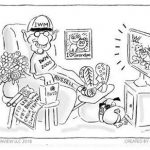Something had to give one way or the other. With all the oil traders piled onto the long side, either demand had to seriously pick up (or plausibly appear ready to do so) or the weak hands would start to capitulate. But as WTI has pulled back from $54 to around so far $48, the futures market remains nearly as net long as ever. There are still (as of the week of March 7) more than 418,000 contracts open on the long side, and though down from the peak two weeks before that level would still have been a record high six weeks ago.


More remarkable is that to this point not many positions transferred to the short side. Oil bears remain as absent as the middle of 2014. Does that suggest resilience on the side of the oil bulls?


Perhaps so, but if it does the WTI futures curve suggests another warning. As the oil market has sold off since the calendar turned to March, the WTI curve has moved lower in almost uniform fashion. The entire curve has dropped from limited backwardation around $55 to split backwardation around $50.

It suggests a fundamental re-evaluation of the oil position, meaning supply and demand factors. We know the supply side pretty well, leaving the “reflation” hope for the other part up in the air. And like 2014, it seems as if those who have piled into the long side do so with the mistaken impression that the economy locally or globally is about due for its long sought boost. The Federal Reserve, quite disingenuously, continues its quiet policy of not correcting this perception when it includes the “rate hikes” as a matter of assumed confirmation for that view.


It’s as if oil markets (net long) believe that the 2014 scenario is still the operative future expectation, when in fact there is enormous difference between what was widely thought possible then and what is actually but inaudibly believed almost impossible now. As that determination may become more widespread due to actual conditions, this recognition that “rate hikes” are not about recovery but monetary policy exit for the sake of exit, it is bound to impact risk perceptions all over again. Oil prices have been the key to the “reflation” in risk, especially as it influences quite directly inflation measures which are being further misused as confirmation of economic acceleration that, again, just isn’t there.














Leave A Comment